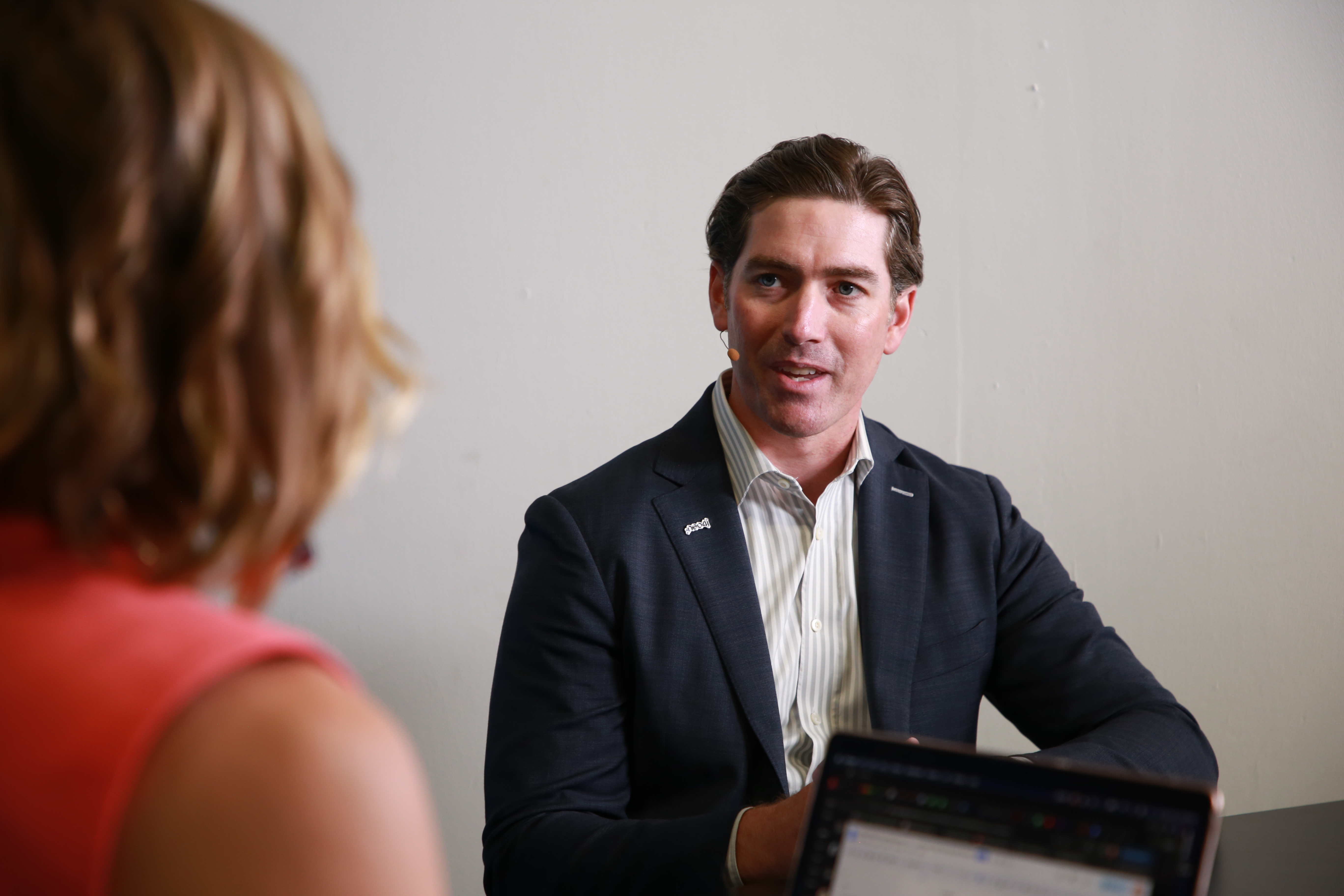 SECURITY
SECURITY
 SECURITY
SECURITY
 SECURITY
SECURITY
Artificial intelligence is a double-sided coin for security, proving a boon to both attackers and protectors, but Neo4j Inc. is continuing to to harness AI when protecting financial service organizations from fraud. The company creates knowledge graphs, which store networks of data, specific to an enterprise, allowing them to find fraud that might otherwise go undetected in an organization.

Neo4j’s Bryan Evans discusses the company’s collaboration with AWS on a graph database in cloud.
“Knowledge graphs can really drive high levels of accuracy, deep explainability, context, reduce hallucinations, and that’s why a lot of leading service providers are recommending knowledge graphs as really an essential part of the gen AI stack,” said Bryan Evans (pictured), regional vice president of sales at Neo4j. “Many companies are missing half the value of their data because they’re not able to track and keep records of relationships and patterns within data sets.”
Evans spoke with theCUBE’s Savannah Peterson at the AWS Financial Services Symposium, during an exclusive broadcast on theCUBE, SiliconANGLE Media’s livestreaming studio. They discussed the advantages of knowledge graphs and how Neo4j is supporting the financial sector’s adoption of AI. (* Disclosure below.)
Although there is high demand for AI use cases across the tech industry, financial organizations can be slower to adopt gen AI into their systems because of the high risk factors that come from handling sensitive data, according to Evans.
“There’s been a slow uptake in gen AI apps that are actually in production in financial services organizations, and that’s due to three main reasons. The first is lack of accuracy on responses that you get from LLMs, lack of explainability and lack of context,” Evans said. “We’re building a knowledge graph specific to an enterprise and their data set that will augment how the LLM interacts with the end user, provides answers and gives them back to the end user.”
Neo4j employs retrieval-augmented generation, or RAG, to query a knowledge graph and return answers to the user in plain English. Now the company is working with Amazon Web Services Inc. on a managed graph database in the cloud.
“What that unlocks for our customers is speed of deployment on Neo4j, speed of ingest, much greater levels of scalability and spinning up multiple databases for specific customers,” Evans said. “We’re putting graph analytics on top of external data sets to drive insights and actionable outcomes from information and data that’s not yet in Neo4j.”
Here’s the complete video interview, part of SiliconANGLE’s and theCUBE Research’s coverage of the AWS Financial Services Symposium:
(* Disclosure: Amazon Web Services Inc. and Neo4j Inc. sponsored this segment of theCUBE. Neither AWS and Neo4j nor other sponsors have editorial control over content on theCUBE or SiliconANGLE.)
Support our mission to keep content open and free by engaging with theCUBE community. Join theCUBE’s Alumni Trust Network, where technology leaders connect, share intelligence and create opportunities.
Founded by tech visionaries John Furrier and Dave Vellante, SiliconANGLE Media has built a dynamic ecosystem of industry-leading digital media brands that reach 15+ million elite tech professionals. Our new proprietary theCUBE AI Video Cloud is breaking ground in audience interaction, leveraging theCUBEai.com neural network to help technology companies make data-driven decisions and stay at the forefront of industry conversations.